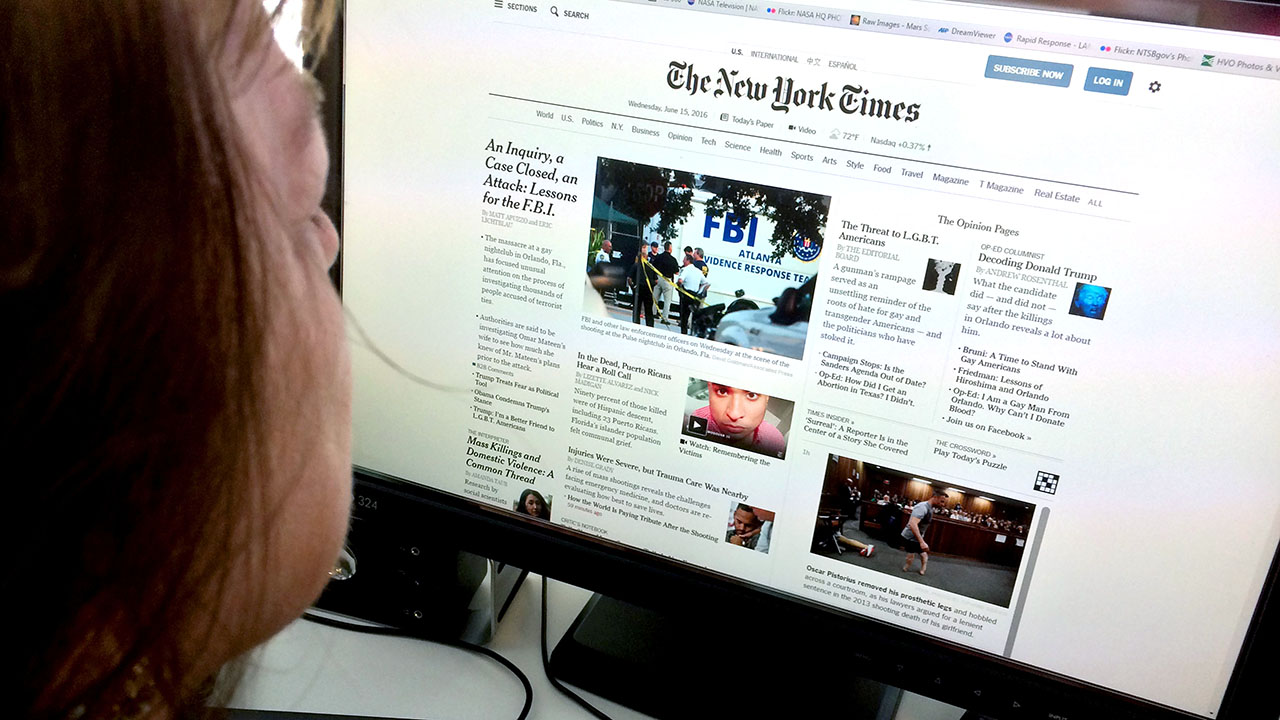An Unbiased View of News Channels
An Unbiased View of News Channels
Blog Article
8 Easy Facts About News Channels Shown
Table of ContentsNews Channels Can Be Fun For Anyone10 Easy Facts About News Channels DescribedFascination About News ChannelsThe smart Trick of News Channels That Nobody is Talking About
Rolling news networks relayed news web content 24 hours a day. The advent of the web has permitted the regular 24-hour-a-day presentation of many video clip and audio information reports, which are upgraded when extra info becomes readily available; numerous tv broadcasters supply material initially offered on-air as well as unique or supplementary news content on their internet sites.Terminals that utilize a "wheel" format tend to maintain to an established routine of specific programs at certain details minutes on the hour, and among these segments is frequently a news. These short bulletins will certainly give introductions of any kind of breaking information of interest, and might include neighborhood concerns such as weather prediction or website traffic reports.

Information programs in the United States were initially sent over the radio. NBC started programs in November 1926, with CBS going into production on September 25, 1927. Both at first gone over similar topics, such as political election results, presidential commencements, and various other issues of issue to the general public. Nonetheless, NBC quickly became the leading pressure for home entertainment skill.
Getting The News Channels To Work
A basic change with time took place in the design of the night broadcasts in a lot of countries. In the 1950s, tv was unique enough that it was thought about entertainment. In the 1960s and 70s, television broadcasts tended to be unusually "serious" by later on requirements, including more "difficult news" and less light home entertainment blended in.

From 2000 to 2010, total viewership of tv program news proceeded to decline. Some news-adjacent cord programs gained popularity and success in this era (such as the comedy-focused and the commentary-focused ). Their gains did not offset the continuing steep decline in viewership of mainline network information.
The smart Trick of News Channels That Nobody is Discussing
newscasts on other terminals. The National, which has aired on CBC Tv because 1954, is the longest-running national network newscast in Canada. All 3 networks likewise generate weekly newsmagazines: CBC's (aired since 1975), Global's (aired because 2008), and CTV's (aired given that 1966 and currently the longest-running network newsmagazine in Canada). [] CTV's is the sole nationwide morning information program on broadcast television in Canada, and replaced, which aired since 1975.
Local TV terminals in the USA typically broadcast regional news three to 4 times a day generally: typically broadcasting at 4:30, 5:00, 5:30, or 6:00 a.m (News Channels).; midday; 5:00 and 6:00 p.m. in the early night; and 10:00 or 11:00 p.m. Some terminals carry morning broadcasts at 4:00, 7:00, 8:00, or 9:00 a.m., midday broadcasts at 11:00 or 11:30 a.m., late afternoon newscasts at 4:00 or 4:30 p.m., or very early night broadcasts at 5:00 or 6:00 p.m
in the Eastern and Pacific time zones or 9:00 p.m. in the why not try this out Mountain and Central time zones in the united state). Terminals that create local newscasts normally relay just one to as much over twelve hours of neighborhood news on weekdays and as little as one hour to as high as 7 hours on weekends; information programs on weekend breaks are normally restricted to early morning and evening broadcasts as the variable organizing of network sporting activities programming (if a station is associated with a connect with a sports division) typically prevents most stations from carrying lunchtime newscasts (nonetheless a couple of terminals found in the Eastern and Pacific time areas do generate weekend noontime broadcasts). [] From the 1940s to the 1960s, broadcast television stations generally supplied regional news programs just one to 2 times each evening for 15 mins (the normal length for numerous locally produced programs at the time); generally these programs broadcast as supplements to network-supplied evening information programs or leadouts for primetime programs.
Little Known Facts About News Channels.
Information share contracts are most usual with stations co-owned. News Channels with a larger network affiliate or whose procedures are jointly taken care of with a shared solution or regional advertising and marketing arrangement. In cases where a station with an existing information division becomes part of an information share contract, it will result either both divisions combining or the outright conversion of broadcast manufacturing from in-house to outsourced manufacturing.
These names are meant to set one station aside published here from the rest, particularly for visitors who are picked for target market measurement studies. If the respondent was incapable to supply a channel number or call letters, the broadcast title is usually adequate for the appropriate terminal to receive Nielsen ratings credit rating. [] The Big 3 program imp source television networks generate early morning and evening national newscasts.
Report this page